
I haven’t done a lot of non-representational pieces, and that has something to do with me thinking they are a cop out. Typically, one doesn’t have to deal with subject matter or meaning. One doesn’t have to call upon one’s life experience (or lack thereof) or have anything significant to say. Just flinging paint about and having happy accidents, while gradually refining one’s technique (think Pollack) seems too easy. The possible lack of content may explain why grandiose spiritual magnitude was heaped on the Abstract Expressionist works of the 50s. Less is not only more, it’s gargantuan. Francis Bacon once had a criticism of American abstract art, which was that, if you were only going to work with color and texture, you’d do well to use extraordinary colors and not dull, faded color. He thought some of the art in question looked like “old lace”. I can recognize the brilliance of a good Pollack canvas, but, still feel for myself that non-representational art could just not require enough of me or give enough.
The limitations of non-representational visual art have a lot to do with the mediums involved and how they are applied. If you’re going to fling paint, spill it, apply it in broad knife strokes or with a squeegee… this can limit the possibilities of suggestiveness. But, if one were working in a way which could create imagery that evokes the external world, one could infuse it with the sorts of tensions, complexities, and poignancies of one’s lived existence. This was the premise I had when I started this image. I wanted to create the kind of precision of a representational image – with subject, foreground, background, textures, and relationships between objects within it – without actually having anything recognizable in it. A musical approximation of this would be something like music with singing, but no lyrics, or at least no words which could be understood.
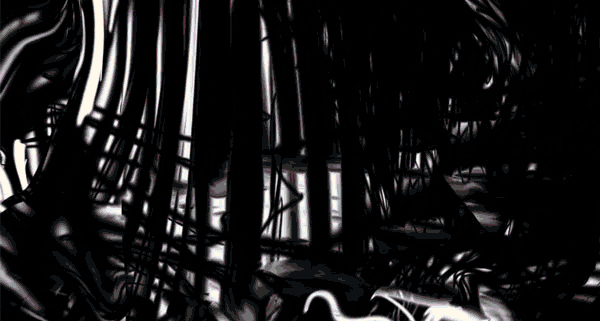
Interpretation How do you interpret a non-representational image? People will find various components of the piece suggest things to them (this probably could work as a Rorschach test if it didn’t automatically say more about the creator than people’s responses). Some people see a furry beast, fire, a brain, a profile, a nude… For me the focus is the swirly conglomerate in the upper left, which people have likened to a brain. I do see that as a kind of nexus of consciousness, perpetually self-defining itself and it’s boundaries, entangling itself, while simultaneously existing in a field of swirling consciousness all around it. I also see a relationship between the nugget-of-consciousness in the upper left and the undulating colorful stripes on the right, perhaps another quasi-distinct but less tangled consciousness, possibly in the process of unraveling. This had a bit to do with how one mentally separates oneself. artificially, from everything else: a process that is ultimately futile and self-defeating (where the only cure may be to let go of the illusion). Some of the colors suggest danger, such as burning. Overall it conjures an intelligence fluctuating between interior and exterior, dissolving and becoming, separation and integration, and all the while interacting with other apparent selves in a realm of flux.
Details Details below are at “actual pixels”. The image is 45″ x 24″ at 240 dpi.
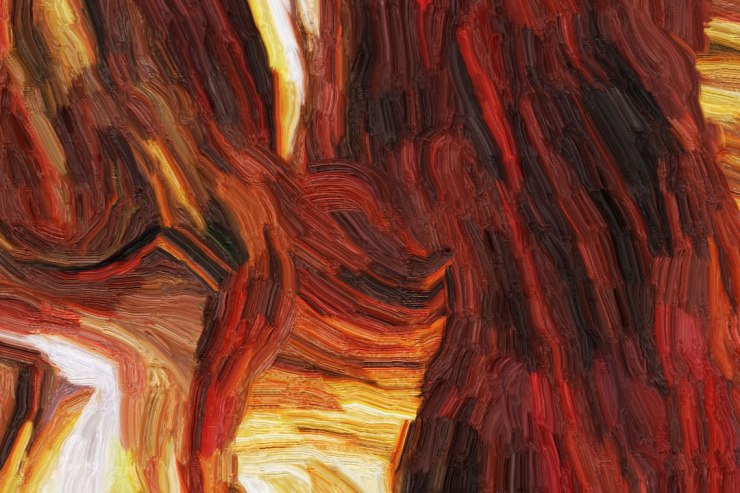
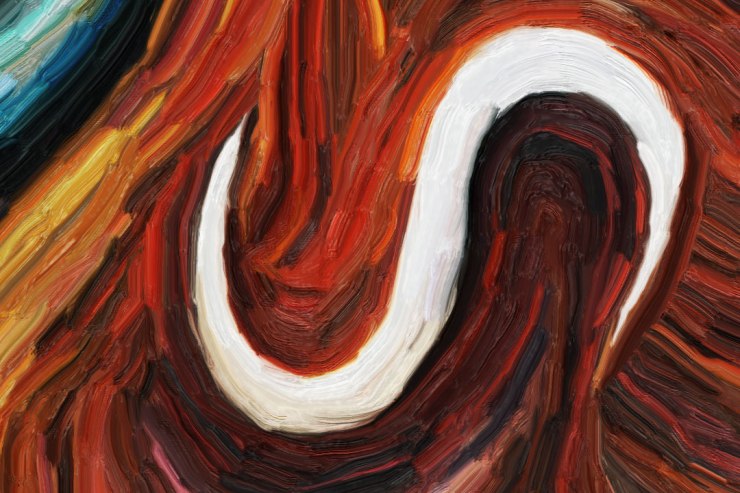
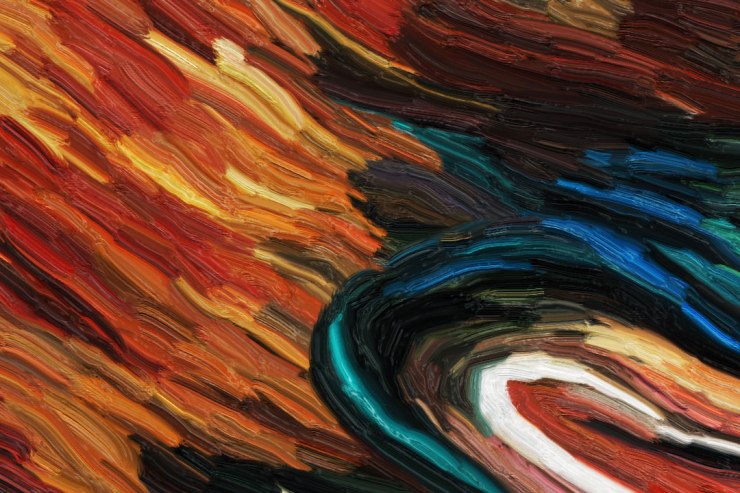
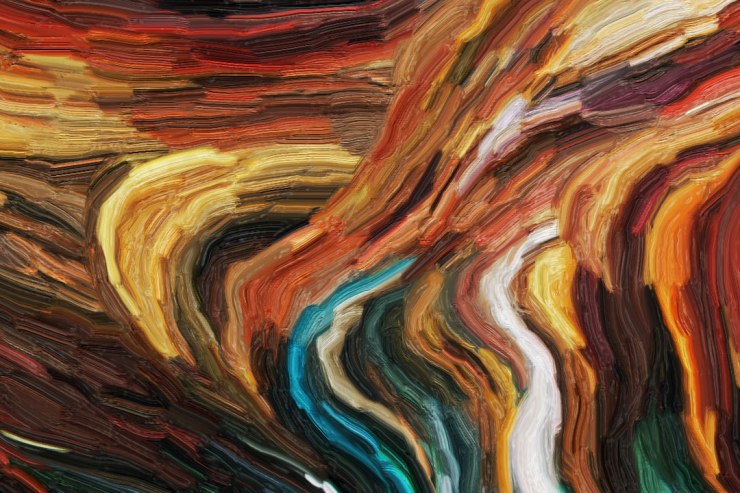
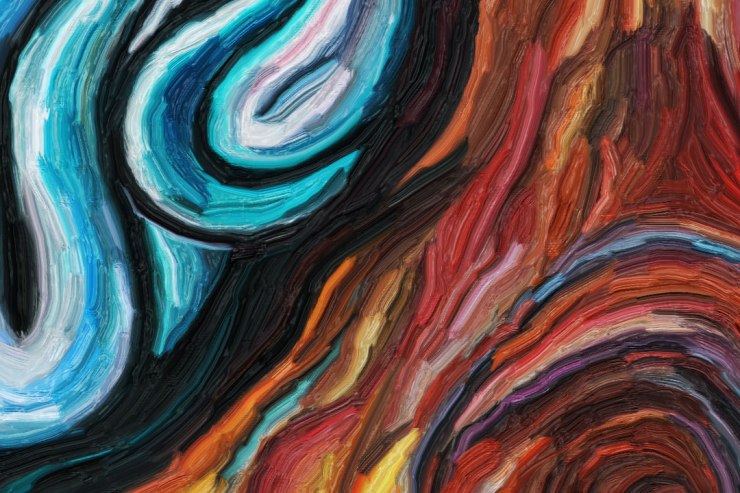
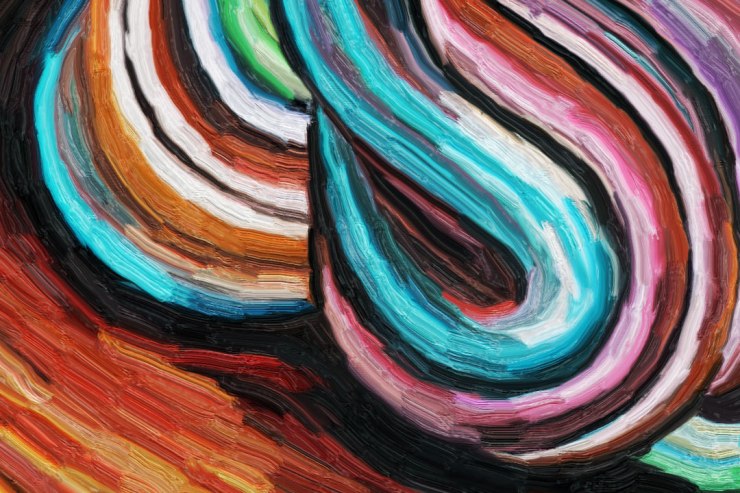
To see a gallery view of all the above images and a few more details, go here.
If you like this piece, you might like this one:
Prints for sale!


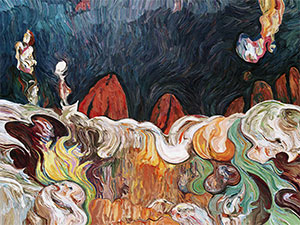
Going psychotic/mystic/psychedelic can give you some pretty odd viewpoints about what is and isn’t representational.
What you realise is that the assembly of visual stimuli is primarily a mental process that can be switched off or knocked out.
Hallucinations (as I experience them at least) don’t really consist of extraneous stimuli but of the mind assembling the stimuli you already receive a different way. So at low levels, for example, the patterns of light and shade on a flat surface will give it a sense of depth and texture – often shifting dynamically as your interpretations shift – that you wouldn’t normally perceive as such. At high levels your ability to create coherent pictures breaks down completely and everything becomes a jumble of colour and shape. Yet you are not actually ‘seeing’ anything that you wouldn’t have seen in your normal state.
I’ve had the experience of having things handed to me in that state, giving the subjective experience of a coherent object emerging magically from utter chaos as my tactile sense provides the prompts that my visual sense no longer do causing my mind to ‘assemble’ the object from previously incoherent stimuli. I’ve also found that I could ‘impose’ scenes onto the chaos via imagination in the same way I would when interpreting non-representational art or cloud formations – even though what I was looking at was not non-representational but literally reality – if there is such a thing.
Maybe the whole universe is really a Rorschach blot.
I like your finished image. It has a sense to me of the ‘blue brain being’ floating through a high energy landscape both at one with it and untouched by it. A freedom image.
But oddly enough I find the monochrome preliminary image even more powerful in an almost opposite way. To me is speaks of a prison cell, impregnable even as it is distorted by the need of the occupant to get out and/or the viewer to get in. The antithesis of freedom.
Rorschach would have me pegged pretty quickly I reckon. I suspect I see my entire universe in terms of the freedom/bondage dichotomy. Hegel or the Taoists would say it was my primary unresolved dialectic.
LikeLike
Hmmmm. “at low levels, for example, the patterns of light and shade on a flat surface will give it a sense of depth and texture – often shifting dynamically as your interpretations shift – that you wouldn’t normally perceive as such.” Sounds like mescaline to me. Have some of your visionary experiences been greased by the perhaps generous imbibing of potent entheogens? Perhaps such a discussion could take place more privately. There is a plant from Oaxica that astounds.
Right, your interpretation is about the same as mine, revolving around a consciousness within a greater consciousness, perhaps, but somehow distinct from it.
You like the early black and white stage better?! Damn, I could have saved myself dozens and dozens of hours of work. My guess is you like the rawer state because it allows your mind to play around with it more. Interestingly, that state was where I thought I had something. Before that it was just a bunch or marks and whatnot. But then I saw something there, and went with it. Did I improve it. I think so. But I’m not really sure this revision is better than the one from April of last year. So, I’m going to stop revising pieces and work on a new one.
LikeLike
Mescaline is a pleasure that has thus far eluded me, but I took my share of magic mushrooms and LSD in my younger days (and would again if the opportunity presented itself).
I honestly don’t distinguish between mystic, psychedelic and psychotic experience except in the manner and degree of control I have over initiating them. Psychosis can be more unpleasant simply because it’s more likely to impose itself in very inconvenient circumstances – so you get a ‘bum trip’ from trying to fight it. It can be pretty debilitating if it goes on for days too. Meditation induced mystic experiences don’t hit me when I’m not completely prepared, but I can’t achieve them at all when I’m depressed or tired and the mental discipline required to maintain them makes them less ‘free’ in some ways. They are invariably very positive though. Acid and mushies are sort of a ‘middle way’. All of them can be ‘directed’ at least to some degree by mental discipline, but that discipline can be hard to find when you’re in a full blown manic psychosis.
I don’t know that I ‘like’ the monochrome one more, just that I found it more powerful. If I was going to hang one on my bedroom wall it would definitely be the finished one.
LikeLike
Yeah, the guy who wrote, “The World’s Religions”, uh, what was his name, er, Huston Smith, wrote another book, I think it was “Cleansing the Doors of Perception” that compares mystical and psychedelic experiences, and concludes they are basically one and the same.
LikeLike